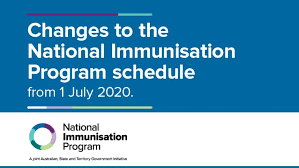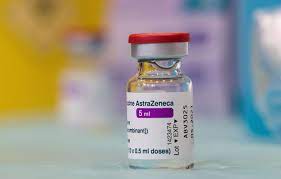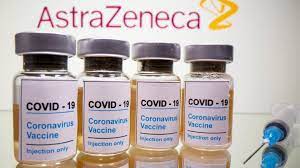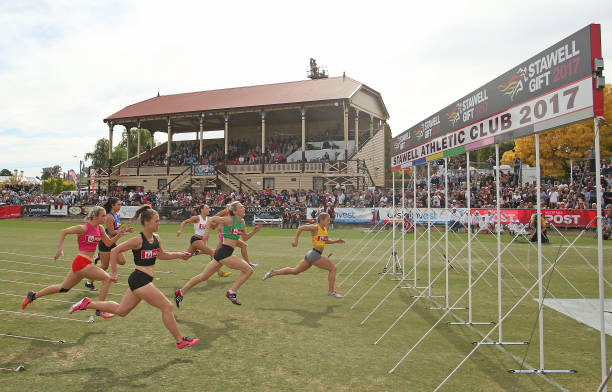Those hoping for clarification on the national COVID-19 plan from last week’s national cabinet meeting will be disappointed. The main outcome from the meeting was a statement about the importance of its discussions and documents remaining “cabinet in confidence”.
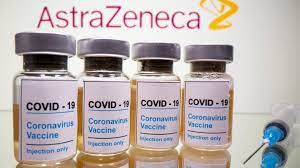
“Cabinet confidentiality ensures that members of national cabinet may exchange differing views and achieve outcomes together.” (Media statement, September 17, 2021)
Sensitivity analyses were considered in relation to two of the Doherty model’s variables, the standard or level of test, trace, isolate and quarantine (TTIQ) practices, and of public health and social measures (PHSMs).
But as far as we know, consideration was not given to the variable which almost all experts thought ought to be changed: the 54 per cent and 65 per cent full vaccination thresholds for the whole population (70 per cent and 80 per cent of “the eligible population”).
There may have been an unwillingness to accept that those original vaccination thresholds were too low. At any rate, national cabinet concluded that “with high vaccination and appropriate TTIQ and PHSMs to constrain outbreaks, overall cases and deaths are expected to be similar in order of magnitude to annual influenza”. (emphasis added)
So the question for each state and territory is what levels of TTIQ and PHSM are appropriate given the incidence of infection that exists in their jurisdiction at any given time.
The trouble is that the dependent variable in the model — the thing against which the level of TTIQ and PHSM is tested for a yes or no answer — is movement from phase A to phase B. And the meaning or significance of such a move is unclear. Phase B lists a number of actions that may be taken by a jurisdiction. There is nothing that a jurisdiction must do — just a list of possible actions.
In what will be a challenge to “the NSW approach”, the Doherty Institute’s revised advice to national cabinet was:
“At high caseloads, maintenance of optimal TTIQ is unlikely to be possible. In such instances, flexibility to strengthen PHSMs generally or locally will be needed (as envisaged in the national plan) to regain epidemic control. The required intensity and duration of measures should be informed by ongoing situational assessment of transmission and its related health impacts.”
Despite this warning, the cabinet’s confidentiality statement issued to the public assumes enough TTIQ and PHSMs to constrain outbreaks. This assumption is what allows it to conclude that cases and deaths would be similar in order of magnitude to influenza.

But back to the national plan. It would help if its meaning was clear. When Scott Morrison announced the plan on the evening of July 30, he read carefully from his prepared notes, presumably in recognition of the plan’s complexity and the need to get the words exactly right. (He was so keen to spell it out that he asked for the light to be turned on so he could see his notes.)
What he said was:
“At each stage, I want to be clear about what the vaccination targets mean for phase B and phase C. States and territories move into the next phase when 1) the national average for the vaccination program, as a percentage of eligible adults, is achieved nationally, and then 2) that state itself has achieved the vaccination threshold in their own state. So, it’s like a two key process. To get to that next phase, all of Australia has to get there together, on average. And, then beyond that each state and territory will pass into that second and third phase based when they reach those thresholds.
Later in his address: “Phase B, which is achieved by the whole country reaching 70 per cent, and then each state and territory reaching 70 per cent…”
Later still: “When we reach 80 per cent, that is, first again, nationally an average of 80 per cent, and the state or territory has reached 80 per cent, we will move into Phase C.”

So here is the problem. The references to a national average suggest an average across the eight jurisdictions. Most telling are the bolded words on the plan document itself that say: “Average vaccination rates across the nation”.
So, let’s say the percentage of the eligible population with two doses in the jurisdictions is 80 per cent in two, 75 per cent in two, 65 per cent in two and 40 per cent in two, the national average, per jurisdiction, would be 65 per cent. That would be a fail. If the laggard two got up to 60 per cent, with no changes in the other six, the average would be 70 per cent — a pass.
The other interpretation, encouraged by the term “achieved nationally” and “by the whole country reaching 70 per cent ” is that the national criterion refers to whether or not a majority of the Australian population has reached the threshold. It is a long stretch, but not completely ruled out for people who are cavalier with words and meaning, to deem “average vaccination rates across the nation” to mean a majority.

This second is the interpretation ACT Chief Minister Andrew Barr had when he gave his daily update on September 12:
“New South Wales are not enacting the national plan if they do things at 70 per cent ahead of the rest of the nation reaching 70 per cent. They are entitled to make changes to their local restrictions, as they have been doing and that’s their purview entirely. But the national plan is very clear that the nation needs to reach the 70 per cent threshold and the nation needs to reach the 80 per cent threshold. Those same constraints apply to the ACT as well. Based on the current vaccination trajectory it will be New South Wales and the ACT that will get to those thresholds first. But our actions under the national plan are limited by where the rest of the country is at.
“Having said that I think it’s important to note that when the nation crosses 70 per cent and 80 per cent is very highly contingent on the vaccination programs in New South Wales and Victoria because together they are nearly 60 per cent of the national population … It’s important that people understand that and their reporting of the national plan reflects that — it’s in bold at the top of the national plan.”
Those bolded words are: Phases triggered in a jurisdiction when the average vaccination rates across the nation have reached the threshold and that rate is achieved in a jurisdiction expressed as a percentage of the eligible population (16+), based on the scientific modelling conducted for the COVID-19 Risk Analysis and Response Task Force.
It’s hard to see how individual jurisdictions can be free to make changes to their local restrictions while at the same time their actions are limited by the provisions of a national plan. They are certainly not going to be restrained by something as ambiguous and unfocused as the present Plan.
But perhaps there isn’t a real national plan at all — just a Clayton’s one used for federal window-dressing. That would explain why there has been so little comment on it, save by Laura Tingle and the Grattan Institute.
If that’s the case, the prime minister should come clean and stop using the term.

And perhaps the next time there is a national emergency, a pandemic or something equally national in its implications, the first thing to do in Australia is to implement new emergency arrangements that have been developed through the experiences of the COVID-19 pandemic.
One of the most critical matters to have been agreed must be the means by which an uneven (or natural) distribution of the emergency does not allow the situation in the various jurisdictions to become so widely varied.
We need to be “in this all together” — but clearly as yet we are not.
Note: this piece was first published in John Menadue’s Pearls and Irritations on 26 September 2021.




